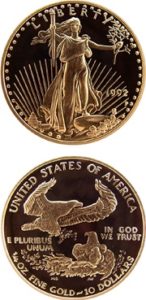Why Bullion is Safer than Coins
Bullion or coins?
This question is often debated by investors when deciding the most secure and cost effective method to invest in precious metals. Here are five assumptions people make when they say they prefer to invest in coins over bullion.
- Counterfeiters are more likely to make fake gold and silver bars than coins because they are larger, easier and therefore more profitable.
- It is difficult to precisely replicate fake coins with exact dimensions and weight.
- Governments have very strict laws about counterfeiting currency, making bars a lower risk proposition for counterfeiters.
- If you buy coins direct from the mint you needn’t worry.
- Coins are more affordable and appreciate faster.

Reasons why those five assumptions may be wrong
Anything of value that can be faked is being faked in China. From European wines, aircraft parts, handbags, chocolate, software, even condoms. You name it, if it can be copied it has been, and possibly on an industrial scale in a factory. Coins are not exempt to the epidemic of knock-offs from the Far East.
Faking coins is not a modern phenomena. However, the problem today is that the latest industrial imaging and die casting technology is producing fakes that are more exact, and extremely hard to detect.
Fake silver and gold eagle coins are being struck and sold for as low as 50¢ a piece on the internet. The very highest quality fake coins are a serious threat to coin shops, dealers, and all coin investors. Perfect gold and silver counterfeit coins have exact weights and dimensions, and can easily be passed off as bonafide to unsuspecting buyers.
A check of coin supplies on online trade sites reveals a plethora of fake Eagles, Maple Leafs, Kangaroos, Krugerrands and other investment coins ready to be distributed into retail markets. Of greater concern is that the most perfect copies bypass the low-end online retail market to be distributed by organised criminals into dealer networks. Counterfeiters do not fear harsh penalties risked by faking currency and it is evident that governments are doing little to address the problem. In fact, the counterfeit manufacturing industry operates freely in the industrial centers of China.
Coins bought direct from the mint have safeguards for authenticity. However, numismatic value creates a premium for the mint. Typically in the realm of 4-5% per oz of gold, or more for smaller denominations or silver coins. But what happens when the investor decides to sell gold or silver investment coins? Is the new buyer now going to pay a premium for a coin that is already in the retail market? There may soon come a time, due to the sheer mass of exact replica counterfeit coins in the market, that dealers will only pay scrap prices for gold coins confirmed by assay at the point of sale. Apart from the lost premium paid at purchase, the investor may also bear assay and refining costs.
However, gold and silver bullion investments have lower premiums above spot price and can be quickly authenticated by non-destructive testing using ultrasound technology. Purchases are safeguarded, and even in the unlikely event that destructive testing is requested upon sale, there is little premium to be lost.
By using an ultrasonic detection meter and buying bullion, more of your wealth is bound to the precious metal needed to safeguard your finances and your future of your. The amount saved by buying just one 5 oz gold bar instead of 5 Gold Eagles covers the purchase price of the ultrasonic detection meter to guarantee the authenticity of the investment.